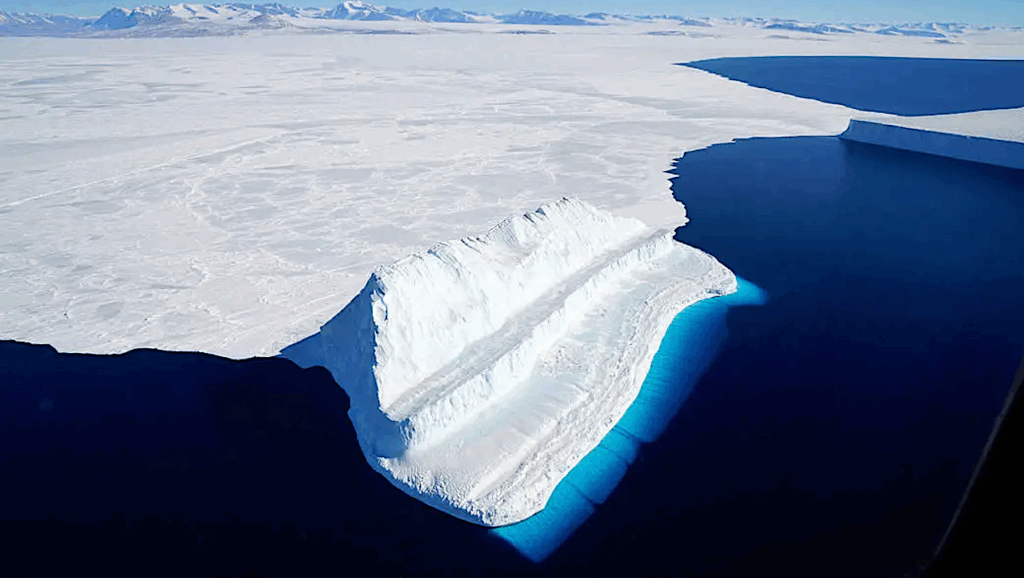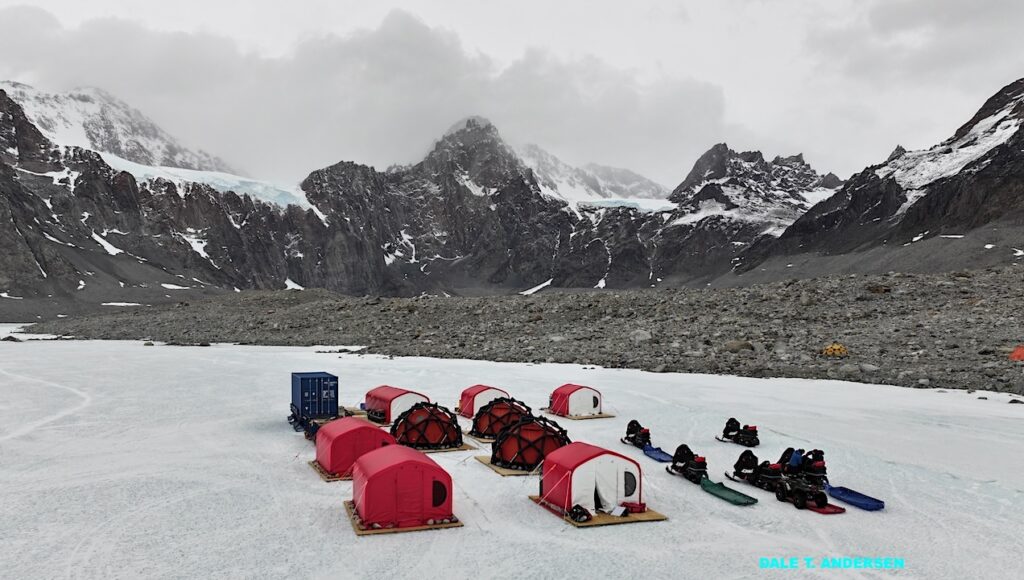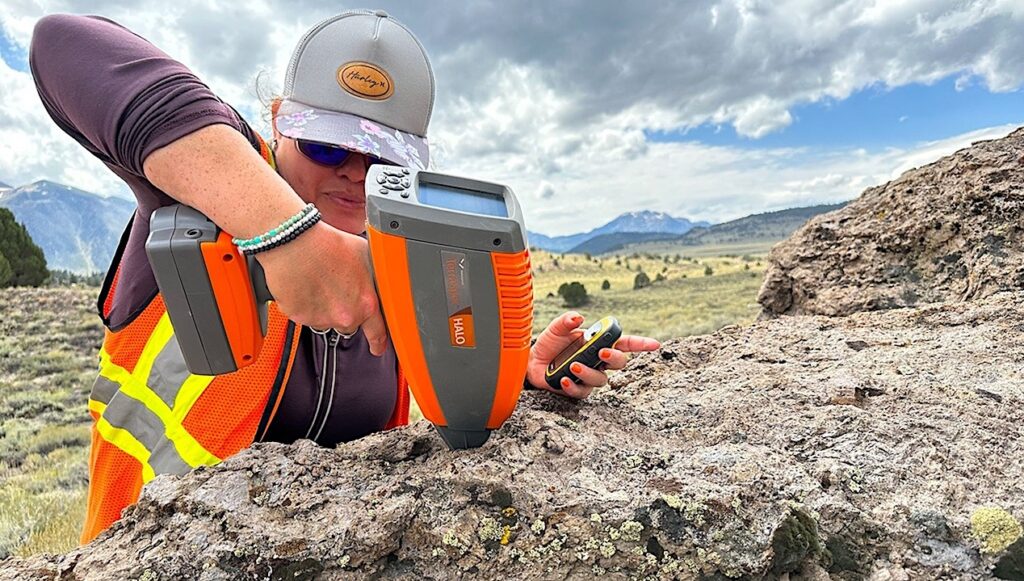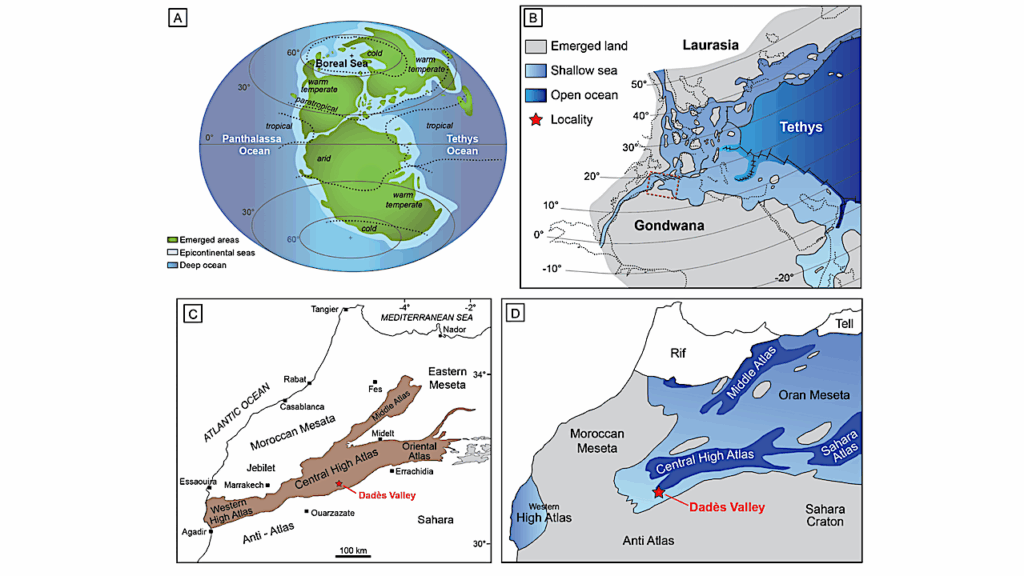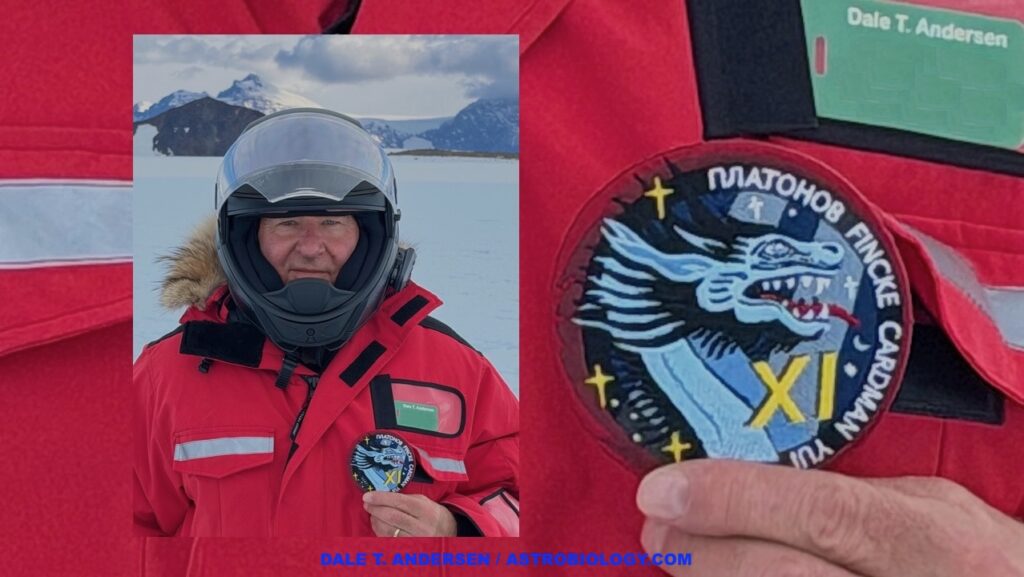Away Team Update: A Pre-Mission Conversation With NASA NEEMO 15 Aquanaut Steve Squyres

Over the years NASA has mounted a series of NEEMO (NASA Extreme Environment Mission Operations) missions using NOAA’s Aquarius Reef Base located near Key Largo, Florida.
This year’s crew is comprised of NASA astronaut and former International Space Station crew member Shannon Walker (Commander), Japan Aerospace Exploration Agency astronaut Takuya Onishi, Canadian Space Agency astronaut David Saint-Jacques, Mars Rover Principal Investigator Steven Squyres of Cornell University, and professional aquanauts James Talacek and Nate Bender of the University of North Carolina, Wilmington.
Outside the Aquarius Habitat, NASA astronauts Stan Love, Richard Arnold, and Mike Gernhardt will pilot the DeepWorker one-person submersible. The idea here is the use DeepWorker to simulate the operational abilities of the Space Exploration Vehicle – a space vehicle that might be used in close operations near an asteroid. This year’s Desert RATS activities also focused on the sorts of operational tasks that might accompany a mission to a small Near Earth Asteroid.
NEEMO and Desert RATS, along with other projects such as those being mounted on Devon Island, the Atacama Desert, and Pavilion Lake are all planetary analogs. Planetary analogs are places – often isolated with inherent risks and interesting surrounding that allow people to work out a lot of the procedures and hardware one would need for long-duration space missions.
While no analog is a perfect analog for an extraterrestrial environment they do possess many attributes that emulate the operational and/or physical environments one would expect to encounter during missions in space or on another planet. Having spent considerable time myself on Devon Island, Desert RATS, and at Everest Base camp in harsh, isolated conditions, I can tell you that “being there”, far from home, in a dangerous place, with little local help, and never enough spare parts, can really drive home the strengths and weakness of your hardware and plans. It is this sort of experience that can separate a good idea from a bad one – fast. Better that you do this on Earth than on a space mission.
This year, the NEEMO 15 crew (offical poster) will use the neutral buoyancy of diving as a simulator of weightless operations, a remote habitat, and a variety of submersibles and robotic devices to go through the paces of what it would be like to hover and interact with a giant rock in space.
I had a chance to chat with NEEMO 15 crew member Steve Squyres today as he waits out some bad weather (life buoy webcam) before his 13 day underwater mission begins. According to Steve its looking like it will be Thursday before they can “splash down” and begin their mission.
Cowing: This is a little unusual for NEEMO. Normally when you look at the crew composition it is composed of astronauts going down for their familiarization training, and they may take a doctor with them and maybe an engineer. I don’t recall having seen a geologist down there – I guess one reason for that being that there aren’t rocks. Of course, with Desert RATS there’s always at least one rockhound in the rover. I understand that there is now some overlap with this asteroid mission concept. It sort of strikes me- and correct me if I am wrong – but it seems like you are using two dissimilar analogs to chop away at a larger issue.
Squyres: What we’re trying to do on NEEMO 15 is to figure out how to do geologic field work in a microgravity environment. And since the focus of the mission is on how to do field work – field geology on a small asteroid – it sort of made sense to have someone along who does field geology. To me it is similar to stuff I recall doing 15 – 20 years ago when we were first trying to attack the problem of how do do field geology with a robot. At that time no one knew how to do that either. So, we went out into the field with a robot and tried things. And now here we are trying to figure out how to do field geology in microgravity – so again we’re going to go out into the field and try things.
Cowing: So what is your “geology” going to be?
Squyres: The actual geology is not important. Just as with a lot of the early work we did with rovers, we weren’t trying to solve geological problems so much as we were just trying to understand the basic mechanisms of doing these things – like taking a panorama, driving through an area and up to a rock, reach out and touching it. It did not matter at the time what the rock was. The geology on the bottom of the ocean her doesn’t matter either. What matters is our ability to try different translation techniques and different positioning techniques. Indeed, how do you even move over the surface of an asteroid in a way that allows you to actually interact with the surface. Is the best way to use translation lines or to use anchors or a back-mounted thruster pack or to put someone on the end of some kind of boom – or with a small spacecraft with its own attitude control system? We’re going to try analogs for all of those on NEEMO 15. We’ll have a couple of crew members working in tandem and a couple of techniques so as to try different tasks that one would expect to use during field work on an asteroid – such as taking a lose rock sample, taking soil samples, breaking off a piece of rock, putting out a seismic array. Just as with the robots early on, you know the tasks – take a panorama, drive to a rock, place an instrument, change an instrument, pry into the rock – that sort of thing. When you first start developing your toolkit of techniques you don’t even need good analog geology. You just need a place where you can practice out those tasks in different ways and see what works and what doesn’t. That’s what this is all about.
Cowing: Do you have something akin to a “practice rock” such as objects with numbers on them …
Squyres: Oh yea. There is a whole array of rocks and places where we can deploy translation lines, simulated seismic arrays, and larger instruments for us to deploy. Its not to hard to sit down and think what the basic techniques you are going to need to sample, deploy instruments on the surface of an asteroid with human crews. We have workable analogs of all those. The point is to try out different ways of carrying out those analog tasks and seeing what works. I think that at some point in the future it would be appropriate to do some real geology – once we have found the right technique. But right now we do not even know if the best way to do all of this is with translational lines or little submarines. So we’re starting from square one.
Cowing: Having done some remote things myself I know the most important part of these analogs is “being there” in a weird location and having to try things out for the first time. Normally, when you are down in the Antarctic or up on Svalbard, usually at night you at least get back to a tent- or maybe a motel room. Is this the first time that you are part of the experiment yourself? Because you are living inside the thing that inside the environment that you are studying – and you are being studied yourself.
Squyres: Yes, I have done field work in the Antarctic and Svalbard where you just go to your tent at night. In this case our tent is the Aquarius Laboratory. In some ways I think it is analogous. But the thing that is noteworthy about this is that you can’t just “come home” if you wanted to. We’re saturated with Nitrogen. So if we need to come up for any reason, there is a 17 hour decompression cycle that we need to go through. So its not an easy place to just “leave”.
Cowing: I always ask this question of NEEMO crews – because I know what it is like to be on Devon Island where any evacuation means that you often have to sit around and wait for a way to get out – and that this reality often alters the way that you think about things – that you might not take a risk that you might otherwise take …
Squyres: Oh yea. And its the same when you have a crew on-orbit, right? You can’t just hop up and go home at a moment’s notice, there’s some preparation required as well. There are, of course, emergency evacuation procedures from Aquarius in case of a true emergency. But the normal procedure at the end of mission is that we have 17 hours of decompression before we come up to the surface.
Cowing: One thing about analogs is that they are a slice of a bigger pie – and there is no perfect analog because if there was then you’d be at the place you were going to go to. NASA is now taking people out in a rover – and, well, if you are “driving” in a rover its going to be an asteroid big enough that we’d probably call it a “planet.” That said, these analogs all overlap but there’s still a big hole missing. Do you think that there is a need to set up a full-fledged base – perhaps in the Antarctic – with the notion that you actually stick people down in it and to do “stuff’ in an environment that is remote, hostile, and operationally akin to being on another world? Do you think NASA should be doing that?
Squyres: I have to be honest, Keith, that is not a question I have given enough though to – such that I can give you a thoughtful answer. That would be a good question to ask me after this mission was over after I have spent 2 weeks in a small habitat with three astronauts doing EVA-like tasks. Then I might have a better perspective on that.
Cowing: Let me get back to something that you and I have talked about many times before. You said the other day that you’re 55 and that this will be the “closest you will ever get to an asteroid mission”. Well, I’ll be 55 for another week and a half – so we have a certain common background. I recall having grown up during Apollo. People had barely stood atop Everest. It was an age when people were still doing “firsts”. Living in the Antarctic was now something you could actually do (instead of just visiting). The Apollo missions used to be talked about as if they were also “expeditions” – that is, they were seen in the same light.
Squyres: Yes, they were.
Cowing: Do you think that we are now out of sortie mode? Is NASA are now entering into a time when its needs to adopt an expeditionary mode?
Squyres; If we are going to send human crews to asteroids – to Phobos and Demos – and to Mars, those trips are, by their very nature, expeditionary enterprises. You travel so far from Earth that the one-way light times and time delays are long enough such that it becomes impossible to carry on a normal conversation with Earth. It requires a degree of autonomy for the crew – and this is something that we did not have to do back in the days of Apollo. You are a long way from home. It takes a long time to get back. These things fundamentally change the nature of the mission and they make it significantly more expeditionary in character.
During NEEMO 15, one of the things that we are going to be simulating in some of our later EVAs are asteroidal time delays between Aquarius and the aquanauts – and CAPCOM topside to simulate the kind of one way light delays you will have when you have a crew operating at an asteroid. We’re trying stuff for the first time to see how it affects us.
Cowing: are you going to truncate the bandwidth as well as putting a latency in there? Are you going to make it harder to send stuff back?
Squyres: There are no plans to truncate the bandwidth – there are only pans to introduce a time delay.
Cowing: I don’t have any children – but you have several daughters. Several people have put it to me that the best people to communicate from Mars are teenagers since they text and Twitter a lot. They excel at asynchronous conversations. Are you going to try using those tools?
Squyres: (laughs) I hadn’t thought about that. We actually are using things like Twitter and Facebook for Outreach. I am @NEEMO_Steve on Twitter so you can follow along with me if you want. Outreach is an important part of our mission objectives so we will be Tweeting from down there. We do not intend to use Twitter for operational purposes because we are not throttling the bandwidth, but I will say that as we introduce some of these time delays, our daily planning conferences are going to become fundamentally text-based. So it will be asynchronous communication and we’ll wind up sending text-based (not SMS) messages since the time delay just gets so long that you can’t meaningfully do it.
Cowing: Are you going to be doing other updates? Some people who go down there are really good at it and others just don’t want to do it. Are you going to be chatty Kathy?
Squyres: I am going to be as “chatty” as I have time to be. My experience on the rover missions has taught me the importance of trying to communicate what e are doing. To the extent that the mission timeline allows I am going to communicate as best as I can. For example, I am teaching this course at Cornell on the history of exploration – I am co-teaching it with another professor. I am actually going to give a lecture via Skype from the habitat about asteroid exploration and NEEMO. We’re going to try to do as much outreach as we possible can – but of course we have an extraordinarily full mission time line – two EVAs a day and 3 hours each. That is going to keep us very, very busy.
Cowing: Yea, I can empathize. I can remember being at Everest Base Camp and having Miles O’Brien Skype me and saying “Hey – I need more B-Roll !” – meanwhile Scott Parazynski and I would be having avalanches nearby, eating bad food, and having crazy climbers running around us. There’s always that sort of “you don’t know what it is like to be here” sort of thing. Its very difficult to explain.
Squyres: Yea!
Cowing: I would very much like to talk to you on the flip side just to see what its like once you have been through this.
Squyres: Yea, let’s make sure we do that.
A Post-Mission Conversation With NASA NEEMO 15 Aquanaut Steve Squyres
Astrobiology


